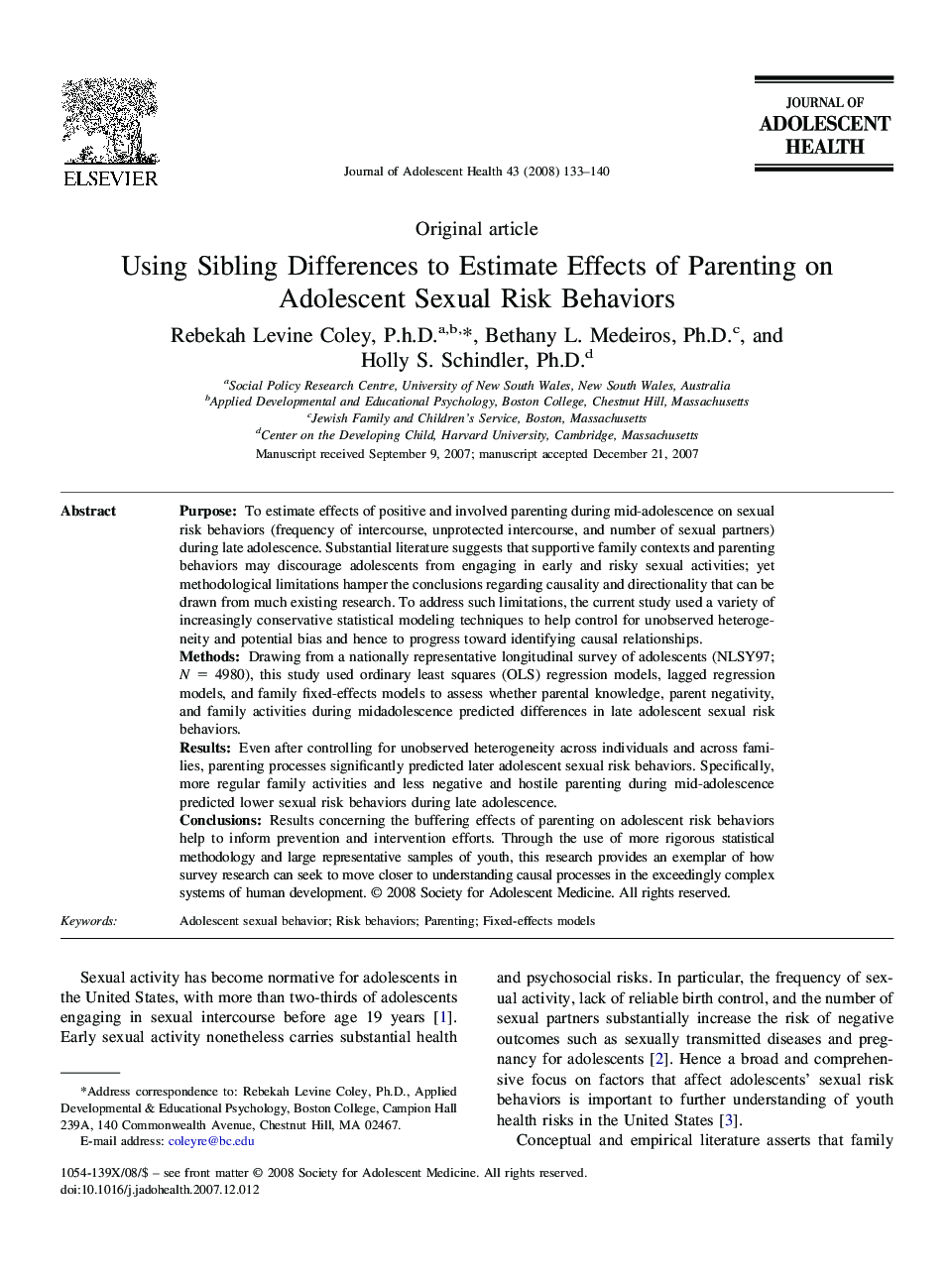| کد مقاله | کد نشریه | سال انتشار | مقاله انگلیسی | نسخه تمام متن |
|---|---|---|---|---|
| 1080048 | 950530 | 2008 | 8 صفحه PDF | دانلود رایگان |

PurposeTo estimate effects of positive and involved parenting during mid-adolescence on sexual risk behaviors (frequency of intercourse, unprotected intercourse, and number of sexual partners) during late adolescence. Substantial literature suggests that supportive family contexts and parenting behaviors may discourage adolescents from engaging in early and risky sexual activities; yet methodological limitations hamper the conclusions regarding causality and directionality that can be drawn from much existing research. To address such limitations, the current study used a variety of increasingly conservative statistical modeling techniques to help control for unobserved heterogeneity and potential bias and hence to progress toward identifying causal relationships.MethodsDrawing from a nationally representative longitudinal survey of adolescents (NLSY97; N = 4980), this study used ordinary least squares (OLS) regression models, lagged regression models, and family fixed-effects models to assess whether parental knowledge, parent negativity, and family activities during midadolescence predicted differences in late adolescent sexual risk behaviors.ResultsEven after controlling for unobserved heterogeneity across individuals and across families, parenting processes significantly predicted later adolescent sexual risk behaviors. Specifically, more regular family activities and less negative and hostile parenting during mid-adolescence predicted lower sexual risk behaviors during late adolescence.ConclusionsResults concerning the buffering effects of parenting on adolescent risk behaviors help to inform prevention and intervention efforts. Through the use of more rigorous statistical methodology and large representative samples of youth, this research provides an exemplar of how survey research can seek to move closer to understanding causal processes in the exceedingly complex systems of human development.
Journal: Journal of Adolescent Health - Volume 43, Issue 2, August 2008, Pages 133–140